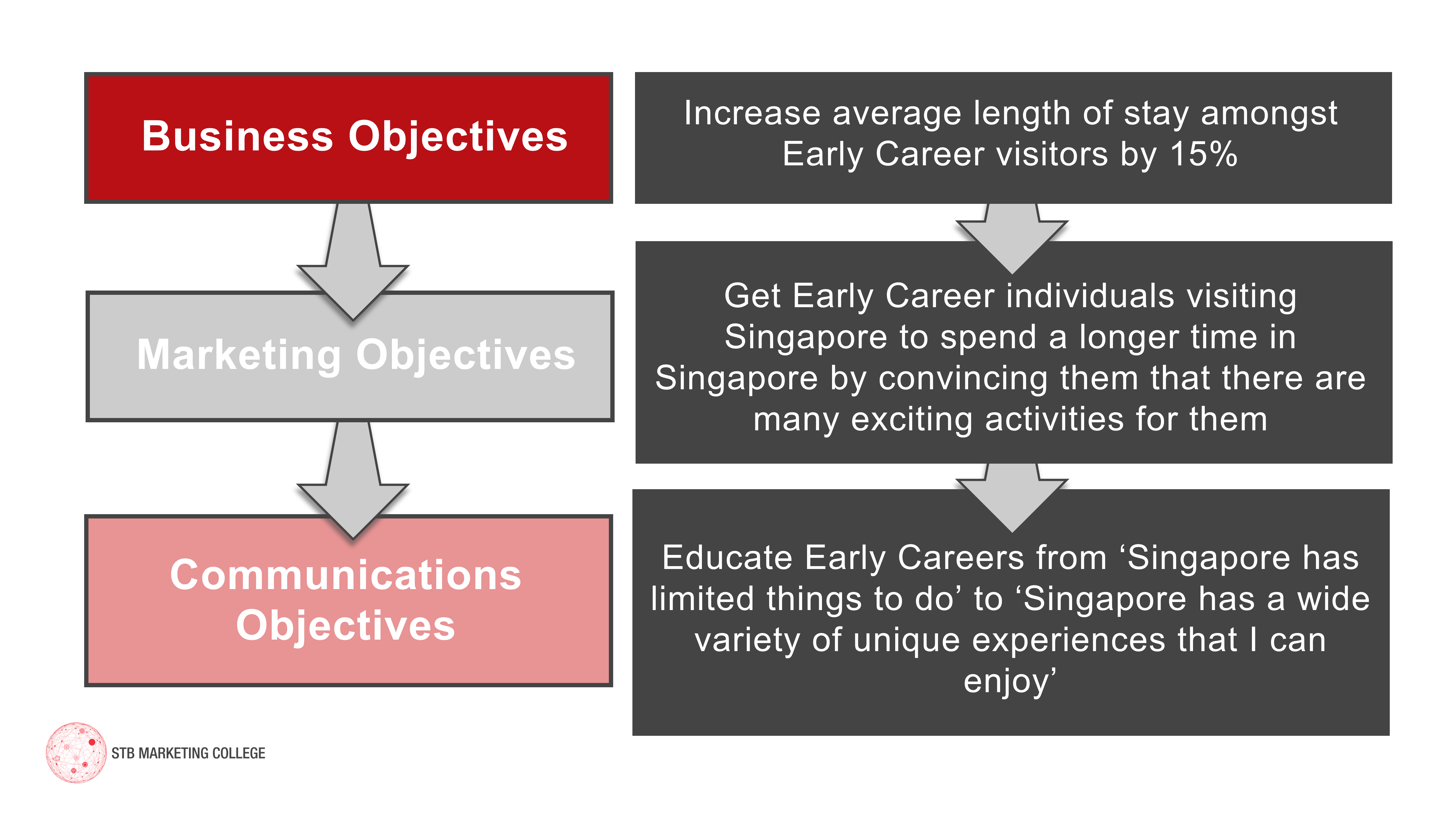
It pays to have a strategy. Short-term tactical marketing is useful for converting consumers, and it should be paired with long-term strategic marketing to connect with consumers even when you have no flash deals to offer.
Strategic planning is about creating a roadmap that tells us how to get from objectives to strategies, to activities. It will be your true north and helps you weed out activities and opportunities that do not align with your desired outcomes.
FLEX captures four principles to guide strategic planning. Being Future-focused, Led by insight, Evolutionary and X-functional have helped companies develop robust strategic plans. Watch a 10-minute video to unpack the principles and see how businesses benefited from it.
Define objectives
Clear objectives keep us focused and form the basis for measuring success.
In any marketing campaign, we suggest crafting three objectives, in the following order:
1. Business objective - this keeps the business outcome as the first consideration
2. Marketing objective - this identifies the challenge to overcome to achieve your business objective
3. Communications objectives - this gives you single-minded focus on the key message you need to drive
Craft these objectives in sequence and ensure that they flow into the other to achieve a coherent and impactful activation.
See how STB uses the objective statements to guide a campaign.

Find out more about crafting objective statements and how brands have applied that for effective marketing here.
Different strokes for different folks
Marketing objective and communications objective should be tailored to your target audience. As you develop strong consumer insights, you may develop multiple marketing and communications objectives to best connect with your consumers. Watch a 5-minute video for a step-by-step guide on developing marketing objectives based on consumer understanding.
In summary, use a "Get...to...by" statement to reflect the opportunity that you will use to communicate with your consumers. Use the guide and template here to start identifying your opportunity.
Armed with your marketing objective, select the type of communication objective required. Generally, there are four types of communications objective:
1. Attitudes - aimed at shifting attitudes
2. Awareness - aimed at making something known
3. Education - aimed at providing information
4. Behaviour - aimed at moving people to action
In the example mentioned above, the communications objective was educational - STB wanted to tell early careers that there are plenty of unique activities available.
Conduct a situation analysis
After clarifying where you will go with your objectives, assess where you are and the opportunities available to you. Analyse key trends and implications to your business with this situation analysis template. For a strong situation analysis, be sure to:-
- Build a structured and succinct analysis that captures the most relevant findings
- Take input from the cross-functional team as important trends and implications could be emerging from different areas
- Use multiple data sources to make the analysis more holistic and robust (e.g. quantitative and qualitative data, trends, etc.)
- Be future-focused and use the questions to analyse trends and insights that may affect your business going forward
- Focus your findings by ensuring it is built in context of the business objective
With the output from your situation analysis, use the SWOT tool below to identify (a) strengths or opportunities to leverage and (b) weaknesses and threats to convert into opportunities. With the SWOT tool, businesses can leverage, explore and fix issues. It assesses your business while remembering to hold the view relative to our surroundings.

With the opportunities identified from the SWOT tool, run them through the checklist below to sift out irrelevant ones:
- Have the issues / opportunities been written with the consumer in mind, rather than from an internal company perspective?
- Are the opportunities directly related to the SWOT?
- Would addressing them help deliver the business objective?
- Can you already think of several activities that would address the opportunity? Or is this simply a statement of a situation, or even a dead-end?
- Is your opportunity written in clear language, as a "How to" question? Is it specific enough to really understand what needs to happen?
Prioritise your opportunities
Having generated a number of opportunities, how do you choose the ones to pursue with your limited resources?
Decide what marketing activities you will pursue with this checklist:

With the considerations above, use the prioritisation tool to categorise the opportunities and act on the one(s) that will give you the best bet at achieving your objectives.

Prepare for your next marketing campaign based on the opportunities prioritised here!


